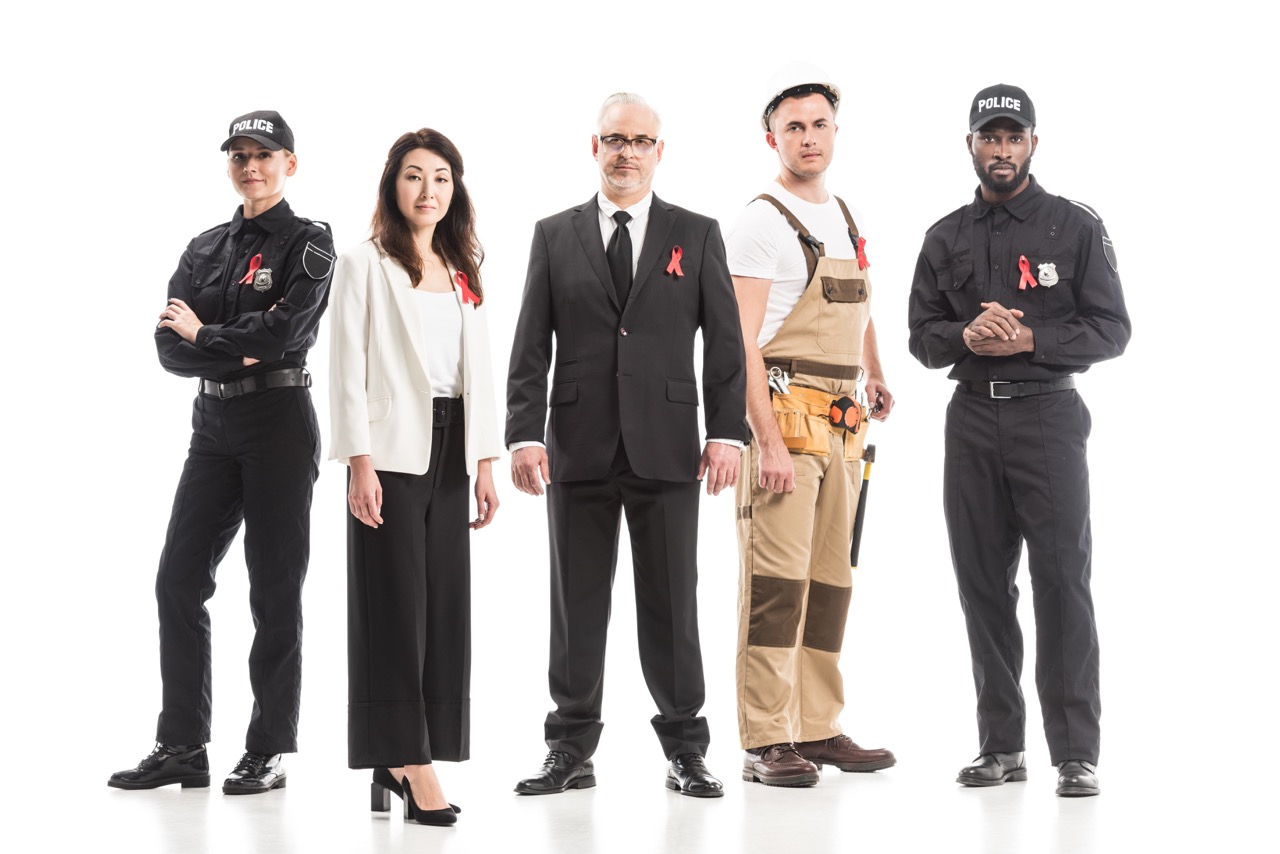Preparedness is often thought of as a personal responsibility. Many people picture an individual quietly stocking food, water, and essential gear in their own home. While self-reliance is important, history shows that communities often survive disasters more effectively when they work together. A single household, no matter how well supplied, can quickly run into limits. Skills may be missing, resources may be stretched, and morale may weaken without outside support.
A community preparedness network solves many of these problems. By connecting with neighbors, friends, or local groups, people create a safety net that is far stronger than anything built in isolation. The value of such a network goes beyond resources. It builds trust, increases knowledge, and strengthens emotional resilience during difficult times.
Why Community Matters in Preparedness
When major disruptions occur, whether they are natural disasters, extended power outages, or large-scale emergencies, individuals who are part of supportive networks consistently do better. A preparedness network offers several key advantages:
- Shared resources: Families can pool food, medical supplies, tools, and other essentials. This reduces duplication and fills gaps.
- Skill diversity: Every person brings unique strengths. A retired nurse, a mechanic, or a gardener all contribute differently. Together, the network has a wide base of knowledge and ability.
- Safety in numbers: Communities can organize security patrols, establish rotating responsibilities, and watch over one another’s homes.
- Emotional resilience: Having others to talk to, share meals with, or lean on during stress creates a powerful psychological boost.
Disaster planning is often measured in calories, liters of water, or battery hours. Yet community adds something more valuable: confidence that no one is facing a crisis completely alone.
Finding Like-Minded People
The first step in creating a network is connection. Many neighbors may already share preparedness interests without using the word “prepper.” Look for signs such as gardening, hunting, camping, or canning. People who already value self-reliance are natural starting points.
Potential members can be found in a variety of places:
- Neighbors who maintain gardens or raise chickens
- Families who participate in scouting, outdoor clubs, or camping trips
- Members of local churches, civic groups, or neighborhood associations
- Parents who think about safety because they want security for their children
Conversations should begin casually. Instead of asking directly about prepping, start with everyday topics like power outages, storms, or winter weather. Most people are willing to talk about these subjects, and the discussions often lead naturally toward preparedness.
Establishing Trust and Building Relationships
Trust is the foundation of any preparedness network. Many people are cautious about revealing how much food or equipment they have, and that caution is understandable. The best way to build trust is to take small, gradual steps.
Some ways to build trust include:
- Organizing a neighborhood workshop on first aid or emergency communication
- Hosting informal gatherings where preparedness topics are introduced gently
- Volunteering for community safety drills or disaster response activities
- Offering to share small resources such as candles or flashlights during minor outages
As members demonstrate reliability, the group can begin to share more details. Over time, the network can establish guidelines for cooperation, confidentiality, and resource sharing.
Organizing Roles and Responsibilities
Once trust is established, a network becomes more effective when roles are clearly defined. Not every person needs to perform the same tasks. Dividing responsibilities ensures efficiency and prevents burnout.
Some potential roles include:
- Medical: Anyone with first aid training or medical experience can organize supplies and provide instruction.
- Logistics: A person who keeps track of inventories, distributes resources, and records needs.
- Communications: Someone who manages radios, message relays, or contact lists.
- Food and Water: Members who organize stockpiles, water purification, and rationing plans.
- Security: Volunteers who establish watch schedules or coordinate with local authorities.
Even children or teenagers can play roles, such as assisting with gardening, helping in communication drills, or learning basic safety tasks. Everyone has something to contribute.
Planning for Different Scenarios
Preparedness networks should plan for more than one kind of event. Different crises require different responses. Some scenarios may call for staying at home, while others may require evacuation. Planning ahead ensures that members know what to expect.
- Short-term disruptions: Storms, blackouts, or temporary supply shortages can be managed with shared resources and support.
- Medium-term events: Extended power failures, transportation breakdowns, or regional disasters may require rationing and rotation of duties.
- Long-term scenarios: Severe disruptions could demand relocation, building community gardens, or creating barter systems.
Networks should regularly discuss these possibilities. Written plans, maps, and contact lists help ensure that everyone is on the same page.
Maintaining Cooperation Over Time
Community preparedness is not a one-time event. It requires ongoing cooperation. Members should meet regularly, share updates, and refresh supplies. Seasonal reviews are useful for checking expiration dates, testing equipment, and practicing drills.
Conflict management is also important. Disagreements are natural, but the group should establish rules for resolving them quickly. Respect, fairness, and a shared goal of survival keep the network strong.
A community preparedness network is more than a group of individuals with supplies. It is a living system of trust, cooperation, and shared resilience. Building such a network takes time, but the benefits are significant. By pooling resources, diversifying skills, and supporting one another emotionally, communities greatly increase their ability to withstand crises.
Preparedness is stronger when it is shared. A stocked pantry and a supply of gear are valuable, but the real strength comes from knowing you belong to a network that will face uncertainty together.
Lessons from History: How Communities Survived Through Collective Preparedness
History provides many examples of how collective action and shared planning allowed communities to endure hardship. These stories show that cooperation is not just a modern idea but a timeless survival strategy.
One well-known example is the way communities responded during the Great Depression. Across North America and Europe, families often lacked money to buy food or supplies. Many towns organized communal gardens, sometimes called “victory gardens,” which produced vegetables that sustained entire neighborhoods. Neighbors bartered eggs for bread, canned goods for firewood, or clothing repairs for farm labor. This informal network of exchange reduced dependence on failing markets and gave people dignity through contribution.
Another case is the Dust Bowl of the 1930s, when severe drought and soil erosion devastated farmers in the central United States. Families who tried to survive alone often faced ruin, but groups that pooled labor, shared water, and combined resources had higher chances of weathering the crisis. Church groups, local cooperatives, and extended families became lifelines, offering not only material support but also emotional resilience. The burden of failed crops and migration was lighter when carried collectively.
Communities also played a vital role during World War II. Rationing was enforced in many countries, and households were encouraged to stretch supplies. While individuals could manage on their own, it was shared kitchens, cooperative food storage, and local resource pooling that allowed larger populations to get by. In Britain, “community kitchens” provided warm meals to those whose homes were destroyed during bombings. In the United States, war-era food preservation classes were taught in schools and civic halls so families could learn how to can, dry, and store food for the winter. The knowledge was shared widely, strengthening the community as a whole.
Even in smaller historical moments, such as local floods, hurricanes, or blizzards, communities have often survived by uniting. Neighbors who checked on one another, shared fuel for generators, or offered shelter to families without heat made a difference between hardship and catastrophe. The lesson is clear: when resources are strained, cooperation multiplies survival chances.
Looking back at these examples, it becomes clear that the principle of preparedness is not simply about stockpiling items. It is about cultivating a system of trust and collaboration that allows communities to share burdens and distribute strengths. History repeatedly shows that the most successful survivors were not those with the largest stores of food, but those who could rely on others for help when times were hardest.
Modern Tools for Building Preparedness Networks
While history teaches us the value of cooperation, today’s world provides new tools that make it easier than ever to connect and organize. Digital communication, social media, and online forums allow preppers and community-minded individuals to share knowledge, coordinate plans, and stay connected during crises. These resources can strengthen networks before and after disasters.
Digital Communication
Messaging platforms and neighborhood apps make local coordination much simpler than it once was. Services like Nextdoor, Facebook community groups, and even encrypted messaging apps help neighbors share updates quickly. A network can use these tools to broadcast storm warnings, report blocked roads, or organize supply runs. Group texts or email lists also ensure that important information reaches everyone at the same time.
Online Prepper Communities
The internet has become a hub for preparedness knowledge. Thousands of people gather in forums, YouTube channels, and survival blogs to discuss strategies, gear, and long-term food storage. While not all online advice is equally reliable, these spaces allow individuals to learn from others with firsthand experience. Channels such as Canadian Prepper or City Prepping have created virtual communities where thousands of viewers exchange ideas.
Social Media for Coordination
Social media platforms provide more than entertainment. During natural disasters, communities often use platforms like Twitter (X) or Instagram to share real-time updates about conditions. Preppers can harness these tools for more than just information. By creating private groups or pages, networks can share guidelines, documents, and checklists in advance. In emergencies, these become ready-made hubs for coordination.
Technology for Training and Skills
Preparedness is not only about supplies. It is also about skills. Online courses, video tutorials, and virtual workshops have made survival knowledge more accessible. Networks can organize group training sessions using video conferencing tools, ensuring that everyone develops essential skills such as first aid, water purification, or basic repair work.
The Balance of Digital and Offline Planning
While technology is a powerful enabler, no network should rely on it completely. Power outages or internet failures are common during crises. Strong preparedness networks balance digital planning with offline tools, such as printed contact lists, walkie-talkies, or amateur radio systems. Combining both approaches ensures that communication and coordination continue even when modern systems fail.
In today’s connected world, digital tools allow preparedness networks to expand their reach, share resources efficiently, and create bonds even before disaster strikes. When combined with the timeless values of trust and cooperation, these tools make communities more resilient than ever.
How to Start Your Own Community Preparedness Network
Building a community preparedness network may sound like a large undertaking, but it begins with small and practical steps. By moving gradually, you create trust and ensure that the group develops naturally rather than feeling forced. Below is a step-by-step guide to help readers start forming their own network today.
Step 1: Begin with Conversations
Start with informal discussions. Mention storm readiness, neighborhood safety, or power outages in casual conversation. Most people are open to these topics and will reveal if they are already thinking about preparedness. Listen more than you talk at first and identify who shows genuine interest.
Step 2: Identify Shared Concerns
Every community has its own risks. In coastal areas, hurricanes may be the greatest concern. In the Midwest, it may be tornadoes or floods. In urban areas, the focus may be on blackouts, supply shortages, or civil disruptions. By identifying the challenges specific to your location, you give the network a clear purpose and shared motivation.
Step 3: Host a Small Gathering
Invite a few neighbors or friends to a casual event, such as a barbecue, potluck, or workshop. Choose a topic that is approachable, like first aid basics, water storage, or storm preparedness. Keep the event low-pressure and informative. The goal is to introduce people to the idea of cooperation without overwhelming them.
Step 4: Create Communication Channels
Once a small group shows interest, establish a way to stay in touch. This could be a group text, an email chain, or even a private social media group. Keep the tone practical and positive. Share simple resources like emergency checklists or weather alerts to demonstrate value early on.
Step 5: Divide Skills and Responsibilities
As the network grows, begin organizing around strengths. Someone with medical experience can help build a first aid kit. Someone who enjoys gardening can provide food insights. Another may have tools or experience in construction. By dividing tasks, members feel included and responsible, which strengthens commitment.
Step 6: Run a Simple Drill
Test the network with a small exercise. For example, simulate a short-term power outage by having everyone check their backup lighting or water supplies. Share results afterward. These drills build confidence and highlight areas for improvement without pressure.
Step 7: Keep Momentum Through Regular Contact
A network must stay active to remain useful. Schedule seasonal check-ins, rotate hosting duties, or volunteer together for local events. Regular contact keeps the group connected and ready to act if a real emergency arises.
Step 8: Scale Gradually
Not everyone will want to participate, and that is fine. Focus on those who are reliable and trustworthy. Over time, your network may expand to include more households, local organizations, or even nearby neighborhoods. Build slowly and prioritize quality over size.
A community preparedness network is one of the most effective forms of insurance a household can have. Supplies, skills, and gear are important, but it is cooperation that truly determines resilience. By starting with small conversations, identifying shared concerns, and building trust through gradual steps, any individual can begin forming a network that supports both their household and their wider community.
Preparedness does not need to be isolating. When people work together, they transform fear of the unknown into confidence that challenges can be faced side by side. The best time to begin building those bonds is now, while conditions are calm and relationships can grow naturally.






